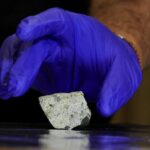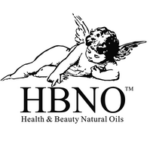Super Absorbent Polymers (SAPs) have become indispensable in various industries, from hygiene products to agriculture and industrial applications. Their exceptional ability to absorb and retain large quantities of liquid relative to their weight makes them crucial in products such as diapers, adult incontinence products, and water-retentive materials for soil. The production of these polymers involves a complex process that starts with the careful selection and use of raw materials. This article explores the primary raw materials used in the production of Super Absorbent Polymers, offering insights into their roles and significance.
For More Industry Insight: https://www.persistencemarketresearch.com/market-research/super-absorbent-polymers-market.asp
1. Acrylic Acid
Acrylic acid is one of the most critical raw materials in the production of Super Absorbent Polymers. It serves as the primary monomer in the polymerization process that forms the backbone of SAPs. Acrylic acid is a colorless liquid with a pungent odor, and its chemical formula is C3H4O2. It is known for its high reactivity, which allows it to polymerize easily with other monomers to form a cross-linked polymer network.
The production of acrylic acid typically involves the oxidation of propylene or propane. During the polymerization process, acrylic acid undergoes radical polymerization, where it reacts with a cross-linking agent to form a three-dimensional network. This network structure is what gives SAPs their remarkable absorbent properties. Acrylic acid must be of high purity to ensure the desired performance of the final product.
2. Sodium Hydroxide
Sodium hydroxide, commonly known as caustic soda, plays a crucial role in the production of Super Absorbent Polymers. It is used to neutralize acrylic acid and convert it into its salt form, sodium acrylate. Sodium acrylate is a key component in the polymerization process and contributes to the high absorbency of the final polymer.
Sodium hydroxide is a strong alkaline compound with the chemical formula NaOH. It is typically produced through the electrolysis of sodium chloride (salt) in a process known as the chlor-alkali process. The resulting sodium hydroxide solution is used to adjust the pH of the acrylic acid, enabling its conversion into sodium acrylate. The concentration of sodium hydroxide must be carefully controlled to ensure the optimal reaction conditions for polymerization.
3. Cross-Linking Agents
Cross-linking agents are essential in the production of Super Absorbent Polymers, as they create the three-dimensional network structure that allows the polymer to absorb and retain liquid. These agents form covalent bonds between polymer chains, enhancing the mechanical strength and stability of the final product.
Several types of cross-linking agents are used in SAP production, including:
-
Ethylene Glycol Dimethacrylate (EGDMA): This is a commonly used cross-linking agent that reacts with acrylic acid to form a cross-linked network. EGDMA provides flexibility and durability to the polymer.
-
N,N’-Methylenebisacrylamide (MBAA): MBAA is another widely used cross-linker that helps in forming a stable and absorbent polymer network. It is particularly effective in producing high-performance SAPs.
-
Divinylbenzene (DVB): DVB is a cross-linking agent that enhances the gel strength and absorbency of the polymer. It is used in combination with other cross-linkers to achieve the desired properties.
The choice of cross-linking agent depends on the specific requirements of the SAP, such as absorbency, gel strength, and swelling capacity. The concentration and type of cross-linker used can significantly impact the performance of the final product.
4. Initiators
Initiators are compounds that start the polymerization process by generating free radicals, which react with the monomers to form polymer chains. The type and amount of initiator used can influence the rate of polymerization and the molecular weight of the resulting polymer.
Common initiators used in SAP production include:
-
Potassium Persulfate: This is a strong oxidizing agent that decomposes to produce free radicals, initiating the polymerization of acrylic acid. Potassium persulfate is known for its high efficiency and control over the polymerization process.
-
Ammonium Persulfate: Similar to potassium persulfate, ammonium persulfate is used to generate free radicals and initiate polymerization. It is often used in combination with other initiators to achieve desired polymer characteristics.
-
Hydrogen Peroxide: Hydrogen peroxide is another initiator that decomposes to form free radicals. It is used in conjunction with other chemicals to control the polymerization process and enhance the properties of the SAP.
The choice of initiator and its concentration are critical in determining the polymer’s properties, such as its absorbency, gel strength, and swelling behavior.
5. Solvents
Solvents are used in the production of Super Absorbent Polymers to dissolve the monomers and facilitate the polymerization process. They help in controlling the viscosity of the reaction mixture and ensure uniform polymer formation.
Common solvents used in SAP production include:
-
Water: Water is the most commonly used solvent in the production of Super Absorbent Polymers. It serves as the medium for the polymerization reaction and helps in dissolving the monomers and initiators.
-
Alcohols: Alcohols, such as ethanol and isopropanol, may be used in combination with water to adjust the solvent properties and control the reaction conditions. They can influence the polymerization rate and the final properties of the SAP.
-
Organic Solvents: In some cases, organic solvents such as acetone or methanol may be used to dissolve specific monomers or adjust the reaction conditions. These solvents are typically used in small quantities and are carefully controlled to avoid any adverse effects on the final product.
The choice of solvent depends on the specific requirements of the polymerization process and the desired properties of the Super Absorbent Polymer.
6. Additives
Additives are used to modify the properties of Super Absorbent Polymers and enhance their performance in various applications. These additives can include:
-
Thickeners: Thickeners are used to adjust the viscosity of the polymer solution and improve its processing characteristics. They help in controlling the consistency of the polymer gel and ensure uniform distribution of the polymer in the final product.
-
Colorants: Colorants may be added to provide specific colors or visual effects to the Super Absorbent Polymer. They are typically used in hygiene products or consumer goods where aesthetic appearance is important.
-
Preservatives: Preservatives are added to prevent microbial growth and extend the shelf life of the Super Absorbent Polymer. They help in maintaining the stability and performance of the polymer over time.
-
Flame Retardants: In certain applications, flame retardants may be added to improve the fire resistance of the Super Absorbent Polymer. These additives help in meeting safety standards and regulations.
This post was created with our nice and easy submission form. Create your post!




